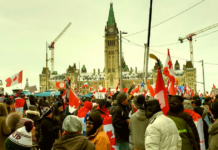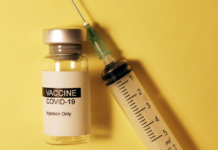You have likely been hearing new terms like “social distancing” and “self-isolation” in the last few months, but what do they mean?
True North has put together this short reference guide to demystify some of the terminology and practices that have been recommended by Canada’s public health experts.
With a better understanding of the terms, Canadians can be equipped to protect themselves and each other.
Social distancing
Social distancing, or physical distancing, means maintaining a physical distance of two metres (six feet) between yourself and others and limiting social contact.
By reducing person-to-person contact, we rob the virus of the opportunity to jump to new hosts.
A common misconception is that if you’re not sick, you don’t have to take part in social distancing. This is wrong. Everybody must take part in social distancing behaviour in order for it to work.
In practice, social distancing has proven to be effective in limiting the spread and reach of a virus.
According to Government of Canada recommendations, Canadians can practice social distancing in the following ways:
- Working from home
- Grocery shopping at off-peak times
- Conducting virtual meetings for work
- Greeting with a wave instead of a handshake or any other physical contact
- Shopping online or ordering food through a delivery service
- Staying at home as much as possible
Self-isolation
Self-isolation means totally separating yourself from others, including those in your own household. Self-isolation is undertaken if there is a likelihood you have come into contact with the virus.
The Canadian government has ordered everybody who meets the following criteria to self-isolate for a period of 14 days even if they show no symptoms:
- has returned from travel outside of Canada
- has had close contact with somebody who is infected with or is believed to have COVID-19
- has been alerted by health authorities that they might have been exposed to the virus
As of March 25, travellers to Canada who break self-isolation orders could face imprisonment and a fine of $750,000 according to provisions under the Quarantine Act.
Those who are self-isolating must stay at home and monitor their health for any symptoms.
Any contact with people in their household or from outside must be avoided.
Anybody who is showing symptoms while self-isolating is asked to call local healthcare professionals or contact their public health authority.
Quarantine
Quarantine is a control measure implemented by the Public Health Agency of Canada in accordance with the Quarantine Act.
When a person is ordered by a Quarantine Officer to isolate, they are placed under quarantine.
Recent measures have been introduced at Canada’s borders and airports to prevent the spread of the coronavirus, which includes mandatory 14-day quarantines for all international travellers coming into Canada.
As opposed to self-isolation, to be under quarantine requires an official order from a public health expert.





















